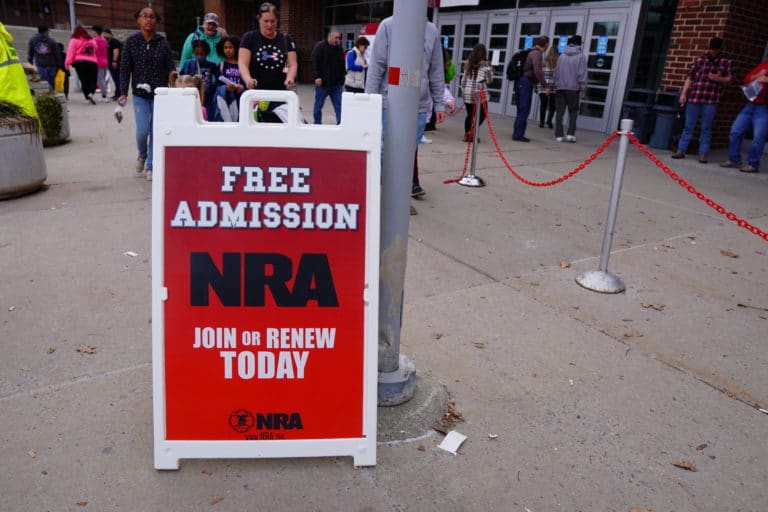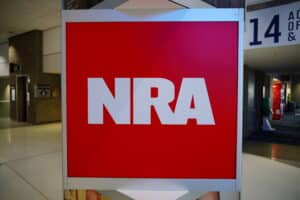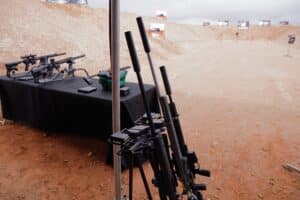The NRA is in trouble and the timing couldn’t be worse for gun-rights advocates.
The gun group’s finances are in shambles. It has lost $130 million in revenue since 2018. It has cut spending by $177 million in the same time period.
Membership has been in decline since 2018. Dues have dropped nearly $73 million in that time. Attendance at the group’s annual meeting in Houston, Texas over the weekend was the lowest it’s been since 2006. Turnout for the NRA board elections in 2022 was down 15 percent from last year and saw fewer ballots returned than any time since 2006.
Only 544 members voted in the 76th board member election at the meeting itself.
That has all happened amidst legal and internal turmoil stemming from corruption allegations levied against Executive Vice President Wayne LaPierre and other members of NRA leadership. The group has been fighting both itself and the New York Attorney General Letitia James for the better part of three years. Even after a failed bankruptcy ploy, the organization continues to have a legal cloud looming over them.
That puts the group in a weakened state. It has fewer resources to advocate for its policy positions. It has less sway over the members that power its political influence. It could soon face a court-ordered reckoning.
And it all comes as the group faces its most difficult fight in years.
The recent shootings in Buffalo and, especially, Robb Elementary School in Texas have reignited the fight over gun policy at the state and federal levels. President Joe Biden (D.) is pushing for a slew of new restrictions. Speaker of the House Nancy Pelosi (D.) is already moving some of the restrictions through the House.
In the Senate, a bipartisan group is working towards compromise legislation.
There are ongoing discussions about a number of bills. School security proposals, such as expanding the Secret Service’s threat assessment center, have some support. But a “red flag” model law, which would incentivize states to pass the policy, is getting more traction.
“Grants are a little less controversial politically than a fed statute,” one Republican staffer with knowledge of the conversations who wasn’t authorized to speak publicly told The Reload. “If you do have one, want to write one, and want to help implement it or update, etc, here is some fed help. But again, voluntary. Your choice.”
President Biden pushed for an age restriction on the sale of AR-15s and similar rifles in lieu of a total ban on their sale. However, the staffer said that was much less likely.
“Don’t see national age restrictions happening,” they said. “Limited appeal for that approach. You will see states go down that road – New York Governor already pushing it, but not seeing the appetite for that in the Congress in a sustainable way.”
The source said they weren’t sure how active the NRA has been on the Hill since discussions began but noted the group has offered some support for red flag laws in the past.
Whether the NRA does or not this time around remains to be seen. But whether it still has the influence to make a difference is the more important question.
Some will argue it may not matter because of the other gun-rights groups out there.
The Firearms Policy Coalition (FPC), Second Amendment Foundation (SAF), and Gun Owners of America (GOA) have grown as the NRA has shrunk. But they remain far smaller. While the NRA has fallen from a $400 million organization to a $280 million organization over the past three years, that still makes it many times larger than the other groups combined.
None of them, nor the major gun-control groups, could hope to pull off an event like the NRA Annual Meeting, even considering its decline this year.
FPC and SAF are increasingly active in filing gun-rights suits with significant success. But the NRA is also the one behind the case currently being considered by the Supreme Court. GOA has begun expanding its presence at the state level. State-based groups provide another boost in that area. But the NRA remains the only group with a nationwide lobbying operation and a significant presence on Capitol Hill.
In the end, the real reason it may not matter if the NRA is as influential enough to impact the debate on its own has more to do with what gave the group power in the first place: gun owners.
As the NRA has either fallen into the increasing polarization of our national politics or driven it forward, depending on your perspective, it has lost influence with some moderate Republicans and nearly all Democrats. It is not NRA donations that kept the Democratically-controlled House from passing an “assault weapons” ban since President Biden took office. And it wasn’t Senators with A ratings from the NRA who kept the President’s first ATF nominee from getting the 50 votes he needed for confirmation.
Instead, it was the realization that voters Democrats need to hold on to power value their gun rights. And it’s that realization that could keep severe restrictions on gun ownership from passing now. That epiphany could still occur without an effective push from the NRA, but it would be a lot easier to make happen with one.






